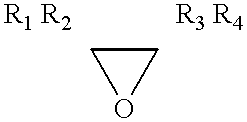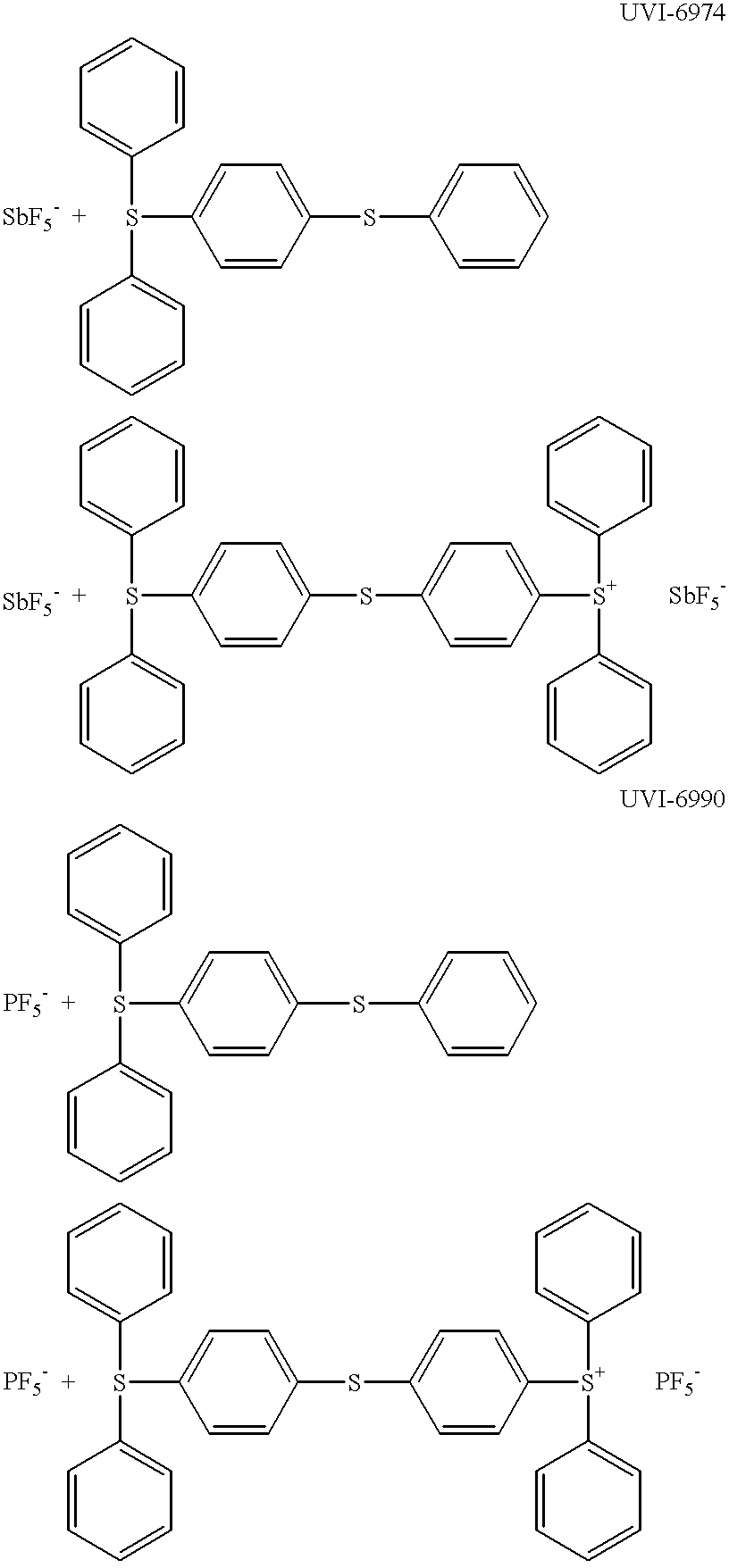Low VOC cationic curable lithographic printing inks
a lithographic printing and cationic technology, applied in the field of low voc cationic curable lithographic printing inks, can solve the problems of affecting the end-product properties, process cost, prodigious challenge, etc., and achieve the effect of reducing the cost of acrylate monomers
- Summary
- Abstract
- Description
- Claims
- Application Information
AI Technical Summary
Problems solved by technology
Method used
Image
Examples
example 2
[0046] The magenta UV cationic lithographic ink composition in Table 2 was employed in a press trial on a Miehle sheet fed press. The main objective of the trial was to evaluate ink cure in the presence of fountain solution. Data from the press run conditions and run results were as follows:
5 Press Run Conditions Speed of Press 6500 (impressions per hour) Ink notches 14 Dahlgren water setting 24 Print density 1.39-1.52 Plate Kodak L Blanket Day International UV blanket Fountain Solution Rosos KSP 500 M-5, 6 oz / gal Conductivity 200 pH 3.8 Temperature 72 F. UV lamps 4 .times. 200 w / in
Press Run Results
[0047] Print Quality clean prints, no ink in the non-image area
[0048] Dot Gain (at 50%) 58%
[0049] Print Contrast 40%
[0050] Cure tack free, passed thumb test
[0051] The results demonstrate that the UV light cationic ink of Table 2 cures in the presence of fountain solution.
[0052] To these further explore the surprising result of curing these UV cationic lithographic inks in the presence of ...
example 3
[0053] A neat UV light cationic cyan ink was applied to coated paper via a "Little Joe" press and cured using Rapid Cure-6 with 2.times.300 w / inch UV lamps at a speed of 100 fpm. The ink was then emulsified with a 10% basic fountain solution (Rycoline 704K - pH9.5) for 30 seconds and immediately printed, tested for cure, and compared to a neat sample. The image printed from the emulsified ink also cured at 100 fpm. The emulsified ink was allowed to stand for an additional 30 minutes and tested again for cure. After standing, the ink again cured at 100 fpm. The example shows that basic fountain solutions do not prevent the curing of the UV light cationic inks of the present invention.
PUM
| Property | Measurement | Unit |
|---|---|---|
| viscosity | aaaaa | aaaaa |
| viscosity | aaaaa | aaaaa |
| viscosity | aaaaa | aaaaa |
Abstract
Description
Claims
Application Information
 Login to View More
Login to View More - R&D
- Intellectual Property
- Life Sciences
- Materials
- Tech Scout
- Unparalleled Data Quality
- Higher Quality Content
- 60% Fewer Hallucinations
Browse by: Latest US Patents, China's latest patents, Technical Efficacy Thesaurus, Application Domain, Technology Topic, Popular Technical Reports.
© 2025 PatSnap. All rights reserved.Legal|Privacy policy|Modern Slavery Act Transparency Statement|Sitemap|About US| Contact US: help@patsnap.com



